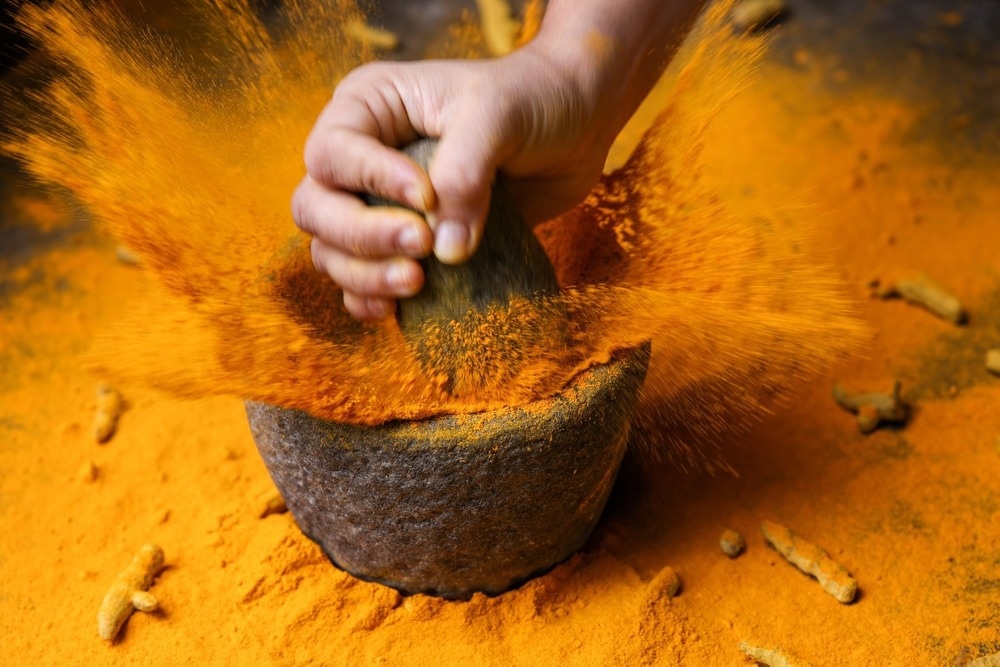Ayurveda: an overview
Basic principles of Ayurveda
The globalization of Ayurveda
Ayurveda in disease management
References
Further reading
Ayurveda: an overview
Ayurveda, which means "science of life" or "knowledge of life" in Sanskrit, is an ancient holistic healing approach that originated in India. Millions of people have been practicing Ayurveda for over 2,000 years to live a balanced life and maintain optimal health. This ancient Indian medical system relies on a natural and holistic approach to promote a healthy lifestyle and treat diseases with minimal side effects.

Image Credit: Santhosh Varghese/Shutterstock.com
Ayurveda involves a highly personalized form of treatment where the patient's basic body composition (Prakriti) is primarily analyzed before disease diagnosis and treatment. The analysis of "Prakriti" can also highlight whether the patient is genetically predisposed to certain diseases. In principle, Ayurveda-based treatments begin with an internal purification process (Panchakarma), followed by a preventive diet, lifestyle modification, herbal medicines, massage therapy, yoga, and meditation. In a nutshell, Ayurveda encompasses all aspects of life – the body, mind, and spirit.
Panchakarma therapy involves five basic actions (karmas) to remove toxins from the body. These karmas are the Virechan (purgation therapy), Vamana (forced therapeutic vomiting), Basti (enema therapy to treat Vata dosha), Rakta moksha (blood purification) and Nasya (administration of medicines like decoctions, oils, and fumes through nasal route).
Basic principles of Ayurveda
Ayurveda considers that Vayu (Air), Jala (Water), Aakash (Space or ether), Prithvi (Earth), and Teja (Fire) are the five basic elements of the universe and that these elements form the three basic humors (Vata dosha, Pitta dosha and Kapha dosha) of the human body. These three humors are collectively called "Tridoshas". Each of these doshas has five sub-doshas that collectively control the basic physiological functions of the human body.
Introduction to Ayurveda: The Science of Life
Among three principal doshas, Vata dosha regulates cellular transport, electrolyte balance, and elimination of waste products. These effects are increased by dryness. Pitta dosha controls the body temperature, optic nerve coordination, and hunger and thirst management. These effects are increased by the body's heat condition. Kapha dosha provides lubrication to the bone joints. Sweet and fatty foods aggravate this dosha. Overall, Vata, Pitta, and Kapha doshas are believed to regulate the catabolism, metabolism, and anabolism of the body, respectively.
According to Ayurveda principles, a perfect balance between five nature elements and three doshas is vital for a healthy life. An imbalance between these factors can lead to disease development. Ayurveda believes that the human body contains seven types of tissues called "Sapta Dhatus." The coordinated action of these seven tissues is required for the proper physiological functioning of the body.
The globalization of Ayurveda
In its originating country, India, Ayurveda is treated as a medical care approach that is equivalent to conventional Western medicine, traditional Chinese medicine, naturopathic medicine, and homeopathic medicine. However, no national-level standard for Ayurvedic training or certification, as well as government-licensed Ayurvedic practitioners, are currently available in Western countries, including the United States.
The transition of Ayurveda from alternative medicine to mainstream medicine requires rigorous research and the formation of high-quality, evidence-based datasets in both diagnostic and therapeutic domains. Although Ayurveda has the potential to benefit healthcare systems if used as an alternative medicine in combination with conventional medical care, products used in Ayurvedic treatments (herbs, minerals, metal, or other materials) should be rigorously tested in clinical trials to avoid possible toxicities and harmful side effects.
A recent study has provided the first data-driven view of Ayurveda practice in India. The study analyzed healthcare data of more than 35,000 patients who were undergoing Ayurvedic treatment and found that about 82% of patients have had chronic digestive, hormonal, musculoskeletal, skin, nervous, or respiratory diseases for more than one year. The study also found that Ayurveda treatment has provided complete or partial relief to more than 76% of patients and that only 0.9% of patients have reported symptom aggravation.

Image Credit: ivector/Shutterstock.com
Conventional artificial intelligence (AI), digital sensing, computer vision, and multi-omics approaches can be used for determining key anatomic, physical, physiological, and psychological parameters at the individual-level (personalized Prakriti), which collectively can benefit Ayurvedic diagnostics.
In this context, a genome-wide single nucleotide polymorphism (SNP) study in 262 individuals from three different Prakritis has shown that PGM1 (Phosphoglucomutase-1) gene is associated with energy production and that the gene is more homogeneous in Pitta Prakriti than the Vata and Kapha Prakriti.
Various AI-based differential diagnosis platforms have been developed for conventional medicine to reduce healthcare costs and promote tele-consultations. Similar initiatives should be taken for Ayurveda and other traditional medicines.
Currently, the Ayurveda industry has an estimated annual turnover of 10 billion USD and a Compound Annual Growth Rate (CAGR) of more than 16%. However, more rigorous evidence-based approaches are required for the industry to achieve a more than 100 billion market value in the next 20 years.
Because of the highly personalized nature of Ayurveda treatments, patient-specific monitoring of clinical, biochemical, and multi-omics parameters would be more effective for determining drug efficacy and safety. Another vital area of research would be the repurposing of Ayurveda medicines for the treatment of emerging infections and non-communicable diseases. In this context, a recent study has shown that an herbal drug (Cissampelos pareira), originally used for the treatment of female hormonal disorders and fever, has the potential to treat dengue viral infection.
Ayurveda in disease management
Only a few well-designed clinical trials and systematic reviews have been conducted to assess the effectiveness of Ayurveda medicines.
A clinical trial conducted on 440 knee osteoarthritis patients has found that two Ayurvedic preparations of plant extracts, one natural product (glucosamine sulfate), and the drug celecoxib have similar potency in reducing knee pain and improving the patients' physical abilities.
Exploring the Connection Between Gut Health and Meditation
A pilot study conducted on 43 patients has shown that Ayurvedic treatment (40 herbal compounds) and conventional treatment (methotrexate) have similar efficacy in treating rheumatoid arthritis.
A short-term clinical trial conducted on 83 patients has shown that an Ayurvedic preparation of five herbs may help manage type 2 diabetes. Moreover, two studies investigating another Ayurvedic herb, turmeric, have shown positive outcomes in managing ulcerative colitis.
Studies assessing the safety of Ayurvedic preparations have indicated that some treatments can lead to elevated blood levels of lead and mercury. In some rare cases, Ayurvedic preparations may cause arsenic poisoning. The US Food and Drug Administration (FDA) has warned that metals used in some Ayurvedic preparations could cause harmful side effects.
References
- Shankar D. 2018. Directions for revitalization of Ayurveda in the 21st century. Journal of Ayurveda and Integrative Medicine. https://www.ncbi.nlm.nih.gov/pmc/articles/PMC6314269/
- Pesala B and Mukerji M. 2021. Reinventing Ayurveda for the 21st Century. TechScape: The Science, Technology and Education Journal of IIT Jodhpur. https://iitj.ac.in/techscape/vol02/issue02/news_and_views/Reinventing_Ayurveda_for_the_21st_Century/
- Ayurveda. Johns Hopkins Medicine. Available at: https://www.hopkinsmedicine.org/health/wellness-and-prevention/ayurveda
- Ayurvedic Medicine: In Depth. 2019. National Center for Complementary and Integrative Health. https://www.nccih.nih.gov/health/ayurvedic-medicine-in-depth
- Harpreet S., et al. 2018. Big Data Analysis of Traditional Knowledge-based Ayurveda Medicine. Progress in Preventive Medicine. https://journals.lww.com/progprevmed/fulltext/2018/10000/big_data_analysis_of_traditional_knowledge_based.1.aspx
- Chopra, A., Saluja, M., Tillu, G., Sarmukkaddam, S., Venugopalan, A., Narsimulu, G., Handa, R., Sumantran, V., Raut, A., Bichile, L., Joshi, K., & Patwardhan, B. (2013). Ayurvedic medicine offers a good alternative to glucosamine and celecoxib in the treatment of symptomatic knee osteoarthritis: a randomized, double-blind, controlled equivalence drug trial. Rheumatology (Oxford, England), 52(8), 1408–1417. https://doi.org/10.1093/rheumatology/kes414
- Furst, D. E., Venkatraman, M. M., McGann, M., Manohar, P. R., Booth-LaForce, C., Sarin, R., Sekar, P. G., Raveendran, K. G., Mahapatra, A., Gopinath, J., & Kumar, P. R. (2011). Double-blind, randomized, controlled, pilot study comparing classic ayurvedic medicine, methotrexate, and their combination in rheumatoid arthritis. Journal of clinical rheumatology : practical reports on rheumatic & musculoskeletal diseases, 17(4), 185–192. https://doi.org/10.1097/RHU.0b013e31821c0310
- Pinto B, Goyal P, Flora SJ, et al. Chronic arsenic poisoning following Ayurvedic medication. Journal of Medical Toxicology. 2014;10(4):395-398.
Further Reading
Last Updated: Jul 24, 2024